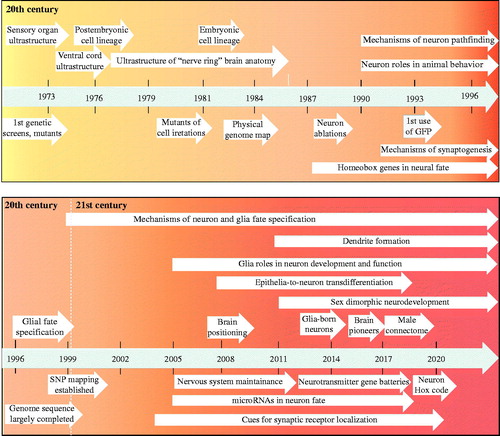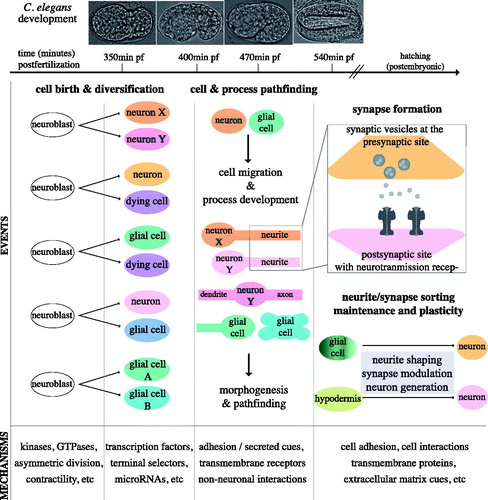Figures & data
Figure 1. Timeline of some milestones in research of C. elegans neurodevelopment. This timeline presents a variety of milestones in the research of neurodevelopment, in cellular, genetic, genomic and mechanistic aspects. As all milestones of a research field cannot be presented, here I highlight early works that solidified different research directions. For details and citations of the events mentioned, see in text.

Figure 2. Core neurodevelopment processes that support the formation of the nervous system. The schematics summarizes selected events in nervous system formation, implicating cell autonomous factors, cell interactions and non cell-autonomous cues. Through development (from left to right), neuroblasts give rise to nervous system components, neurons and glia migrate, grow and diversify processes to then reach targets and generate synaptic connections. These connections are subject to maintenance and plasticity by mechanisms acting in neuronal or associated, non-neuronal cells, such as glial cells and hypodermal cells. Specifically, non-neuronal glia and hypodermal cells can generate postembryonic neurons, by division or transdifferentiation and in other instances they function for synapse maintenance or plasticity. For details and citations of the events and underlying mechanisms mentioned here, see in text.

